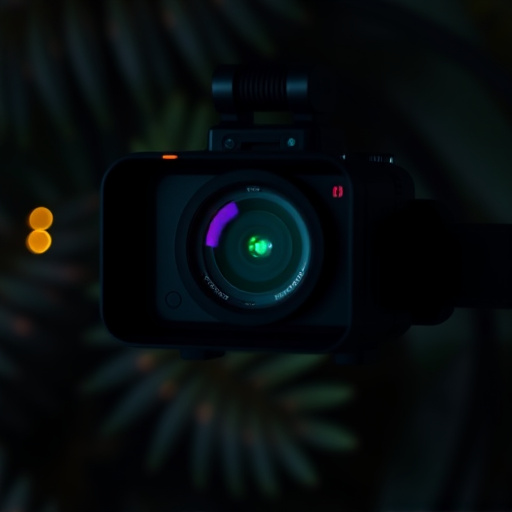Nanny cams disguised as everyday objects offer discreet video and sound surveillance, primarily used by parents for childcare safety. However, their misuse raises significant privacy concerns. This text explores the benefits and ethical implications of Nanny Cam With Sound Recording in private households, emphasizing responsible use. It discusses how light and sound can be combined to improve detection accuracy, and outlines a multi-faceted approach to testing for these hidden cameras using specialized equipment and visual inspections.
Uncover the hidden eyes that may be watching with our comprehensive guide to disguised camera identification. We explore the insidious world of “nanny cams” and their clever disguises, focusing on the role of light and sound in detection. Learn about cutting-edge testing methods designed to pinpoint these covert devices, including those capable of sound recording. Discover how to protect your privacy and ensure peace of mind in today’s tech-driven world.
- Understanding Nanny Cams and Their Disguises
- The Role of Light and Sound in Detection
- Testing Methods for Identifying Hidden Cameras
Understanding Nanny Cams and Their Disguises
Nanny cams, also known as hidden cameras, are devices designed to capture video and sometimes sound recordings discreetly. These surveillance tools have various disguises, making them nearly indistinguishable from everyday objects. From fake smoke detectors to elaborate clock radios, these hidden cameras can be placed in seemingly harmless locations, allowing for unobtrusive monitoring. The addition of sound recording capabilities further enhances their functionality, capturing not just visual but also auditory cues that could provide valuable context.
This technology is often employed for childcare purposes, where parents use nanny cams to ensure the safety and well-being of their children while they are at home with caregivers. However, the same features that make them useful for parental oversight can raise privacy concerns when misused. As such, it’s crucial to consider both the benefits and ethical implications of using hidden cameras, especially those with sound recording functions like Nanny Cams With Sound Recording, in private households.
The Role of Light and Sound in Detection
In the realm of disguised camera identification, light and sound play a crucial role in detection. A Nanny Cam With Sound Recording, for instance, leverages both visual and auditory cues to reveal its true nature. While lights might be used to mimic common household fixtures, the integration of sound can expose these devices as cameras, especially when audio is accidentally captured or intentionally played back.
The subtle patterns of light and shadow cast by hidden cameras can often be detected through careful observation, but sound offers an additional layer of clarity. Background noises, like those from appliances or conversations, can sometimes leak into the recording, indicating the presence of a covert camera. This synchronization of visual and auditory cues significantly enhances the chances of identifying such devices, making them less effective as surveillance tools.
Testing Methods for Identifying Hidden Cameras
Testing hidden cameras, like nanny cams with sound recording, involves a combination of visual and auditory cues. One effective method is to use specialized lighting equipment that can detect infrared or UV light, common in covert camera circuitry. These lights are often imperceptible to the naked eye but can be picked up by sensitive sensors, revealing the presence of hidden cameras. Additionally, audio testing involves playing specific frequencies or sounds known to trigger responsive cameras, further confirming their location and operation.
Visual inspections should encompass a thorough examination of potential hiding spots, especially in areas where privacy is a concern. This includes checking common locations like corners, behind furniture, and near power outlets or cables. By combining these testing methods, individuals can increase their chances of identifying hidden cameras, ensuring a safer and more secure environment.
Disguised camera identification is a complex task, but with the right tools and methods, such as testing with lights and sound recordings, it becomes more feasible. Understanding the various disguises used in nanny cams and leveraging the power of light and sound can significantly enhance detection capabilities. While no method is foolproof, combining visual and auditory cues provides a robust strategy for identifying hidden cameras like Nanny Cams with sound recording, ensuring greater security and peace of mind.
